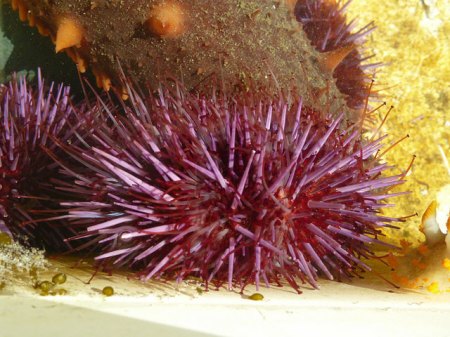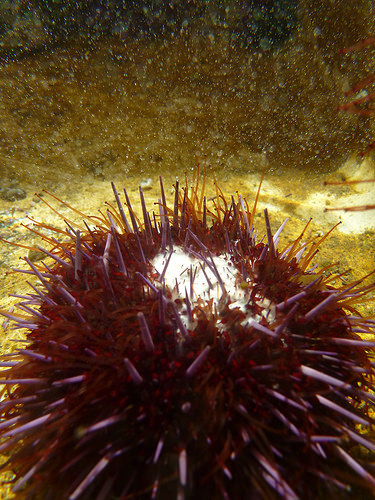 Oops, the sea slug that laid this egg mass / egg ribbon seems to have made a mistake by laying it too high on the piling. I took the photo above on 5 May and two days later (see photo below) the egg mass is quite dried out – deadly desiccation! – but somehow still managing to hang on.
Oops, the sea slug that laid this egg mass / egg ribbon seems to have made a mistake by laying it too high on the piling. I took the photo above on 5 May and two days later (see photo below) the egg mass is quite dried out – deadly desiccation! – but somehow still managing to hang on.
Posts Tagged ‘eggs’
Egg error
May 7, 2015Eggs, eggs, eggs…
March 25, 2015 During a short excursion to the Director’s intertidal zone on Monday 23 March 2015, D block marine scientists discovered the eggs of several species. Above are the egg masses and adults (including one unusually pale example) of the barnacle-eating sea slug (Onchidoris bilamellata).
During a short excursion to the Director’s intertidal zone on Monday 23 March 2015, D block marine scientists discovered the eggs of several species. Above are the egg masses and adults (including one unusually pale example) of the barnacle-eating sea slug (Onchidoris bilamellata).
Also some very green fish eggs laid in an intertidal crevice (above).
And some dog whelk (Nucella ostrina) egg capsules.
Thanks to Alana for the photos!
Sea urchin fertilization & development
February 26, 2015 In second year Biology we are currently studying reproduction and although our focus is human reproduction, sea urchins are a wonderful model to study. Pearson College divers collected about 40 purple sea urchins (Strongylocentrotus purpuratus) and brought them back to the floating lab. In Biology class we injected them with potassium chloride which causes them to release their eggs or sperm.
In second year Biology we are currently studying reproduction and although our focus is human reproduction, sea urchins are a wonderful model to study. Pearson College divers collected about 40 purple sea urchins (Strongylocentrotus purpuratus) and brought them back to the floating lab. In Biology class we injected them with potassium chloride which causes them to release their eggs or sperm.
I have done this lab many times and in many locations and I am very pleased to say that this time was my most successful! The first urchin I injected released many healthy eggs. This is where my luck usually changes because without sperm, eggs are useless. I asked students to choose a male urchin (there is no way to tell by looking at them, so it takes some luck). Bader chose one and very soon after being injected streams of sperm came out of the gonopores!!

Students then took a sample of eggs to look at under the microscope then added sperm in order to watch fertilization.
Photo above at 2 hours post-fertilization. All of the eggs are fertilized and a few are at the two-cell stage.
At 5 hours post-fertilization, there are some two-cell stage embryos but most are at the four-cell stage.
At 10 hours, we had blastulae with big cells, still in their fertilization membranes.
At 21 hours, blastulae with smaller cells, still in their fertilization membranes.
At 26 hours, some of the blastulae hatched out of their membranes and started spinning.


 At 6 and 7 days post-fertilization, we had pluteus larvae!
At 6 and 7 days post-fertilization, we had pluteus larvae!
All of the urchin larvae have now been released into Pedder Bay with warm wishes for a long kelp-ful life!
See https://www.flickr.com/photos/130038530@N07/sets/72157651009889142/ for more photos.








